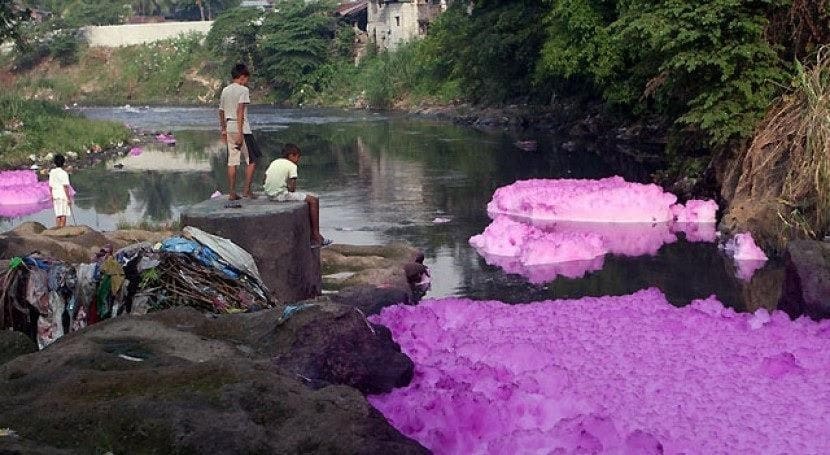Fashion companies such as Zara, forever 21, and H&M cater to the requirements of younger customers by producing affordable and stylish clothing. However, rapid fashion has a big effect on the environment. The business uses the second-most water and contributes roughly 10% of the world’s carbon emissions, which is more than all international travel and sea shipping put together, according to the UN Environment Programme (UNEP). Unfortunately, customers frequently ignore the issues with quick fashion.
 The fast fashion industry is contributing to the triple global problem with its waste, emissions, and new season, new trends, purchase more, buy cheap, move on, and throw away mentality.
The fast fashion industry is contributing to the triple global problem with its waste, emissions, and new season, new trends, purchase more, buy cheap, move on, and throw away mentality.
Although circularity in the textile value chain and sustainable fashion are feasible, global consumers in this century are purchasing more clothing and using it for shorter periods of time than in previous generations, throwing it away as soon as trends change.
The drive to create a world with zero waste is being led by the United Nations Environment Programme (UNEP). UNEP and spoken word poet Beatrice Kariuki from Kenya have teamed up to highlight high-impact industries where customers can actually make a difference as part of this ambitious approach. (UN GOV, 2022)
The phrase “fast fashion” has gained prominence in discussions about sustainability, environmental conscience, and fashion. “Cheaply produced and priced garments that copy the latest catwalk styles and get pumped through stores in order to maximize on current trends” are the words used to describe the phenomenon.
The fast fashion model gets its name from the speed at which clothes are designed, produced, distributed, and marketed. This allows retailers to draw big amounts of a wider range of products, giving customers more fashion and product distinction at a lower cost. (Maiti, 2024)
 How is fast fashion impacting the Earth?
How is fast fashion impacting the Earth?
A Business Insider investigation claims that the manufacture of fashion accounts for 10% of all carbon emissions worldwide—more than the European Union does. While 85% of all textiles end up in landfills each year, it dries up water sources and pollutes rivers and streams. An annual total of 500,000 tons of microfibres, or 50 billion plastic bottles, are released into the ocean by the simple act of washing garments. (Maiti, 2024)
Ten percent of the water required by the industrial sector to run plants and clean products is consumed by the fashion industry. To put this into perspective, one kilogram of cotton requires 10,000 liters of water, and one cotton shirt requires about 3,000 liters of water. Moreover, hazardous chemicals needed for textile dyeing wind up in our oceans. This process is responsible for around 20% of the wastewater generated globally throughout time. Since many manufacturers have relocated abroad, as was previously said, it’s possible that they are now located in nations with lax environmental laws, allowing untreated water to enter the oceans. Unfortunately, the wastewater produced is highly hazardous and frequently cannot be cleaned up to an acceptable level. (Le, 2020)
Plastic microfibers that end up in our waters are mostly the result of manmade materials. Precisely speaking, these artificial materials account for about 35% of all microplastics. Producers use potentially low-quality materials in an attempt to further reduce the price. For instance, polyester, which is mostly composed of plastic, makes up a large portion of the fibers and emits a lot more carbon dioxide than cotton. In addition, plastic takes a long time for it to break down in the ocean. When plastic eventually decomposes, a poisonous material is produced that is bad for marine environments. These plastic microfibers are impossible to remove, thus aquatic life introduces them into the human food chain, where they have a detrimental impact on numerous aspects of health. They can get into our ocean in a number of ways, but most frequently through our use of the washing machine. Even while it’s clear that the washing machine has become a necessary home equipment, it’s still crucial to wash full loads whenever you can to reduce water waste.
 In 1890, viscose was introduced as a less expensive production alternative to cotton, marking the beginning of cellulosics. Wood pulp is used to make viscose, also referred to as rayon, a popular
In 1890, viscose was introduced as a less expensive production alternative to cotton, marking the beginning of cellulosics. Wood pulp is used to make viscose, also referred to as rayon, a popular
cellulosic fiber. The use of dangerous chemicals and unethical sourcing for the material have severely negative consequences on the environment. While the industries utilize hazardous chemicals, some are concerned about effects that go beyond the environment. For example, workers who produce viscose fabric are exposed to carbon disulphide, which can have fatal health effects. Therefore, it may come as no surprise that the manufacture of viscose generates more greenhouse gas emissions than that of cotton. (Le, 2020)
It’s obvious that clothing is no longer reusable. We produce an increasing amount of textile waste as a result. In Europe, the average family discards 11 kg of clothing annually. The remaining material is either burned or goes straight to the trash; only 15% is recycled or given.
Since synthetic fibers, like polyester, are made of plastic, they cannot break down biologically and can take up to 200 years to do so. Our clothes are made up of 69% synthetic materials. (Staff, 2023)
Hazardous Materials in Our Clothes
Every step of the textile production process involves the use of chemicals to create fibers, bleach and dye fabrics, etc. Even clothing labeled as “100% natural” still has a lot of chemicals in it when it gets to the stores. The largest organ in our body, our skin absorbs everything we put on it, including the toxins in our clothing. These could actually be harmful to our health.
Eleven chemicals that are commonly used to produce our clothes contain pollutants, carcinogens, and hormone disruptors that should be prohibited but aren’t currently. This information was gathered from a Greenpeace investigation for the Detox Campaign.
According to some studies, a child’s urine can contain specific chemicals from their pajamas up to five days after they wear them for just one night.
Hazardous substances were detected in 63% of the tested goods from 20 different textile companies, including major fashion brands, according to a recent study. (Staff, 2023)
 Presently, the fashion business is more accountable for yearly carbon emissions than all foreign travel and sea transportation put together. Within ten years, a 50% increase in greenhouse gas emissions is predicted if the industry continues on its current trajectory. The next steps are simpler to comprehend when we examine the underlying reasons of the issue since we can make connections and develop solutions. The article mentioned a few potential fixes, but there are others, such as advocating change and making thoughtful fast fashion brand purchases.
Presently, the fashion business is more accountable for yearly carbon emissions than all foreign travel and sea transportation put together. Within ten years, a 50% increase in greenhouse gas emissions is predicted if the industry continues on its current trajectory. The next steps are simpler to comprehend when we examine the underlying reasons of the issue since we can make connections and develop solutions. The article mentioned a few potential fixes, but there are others, such as advocating change and making thoughtful fast fashion brand purchases.
You’re not the only one who is unsure about selecting brands to endorse. When making a clothing purchase, researching a brand beforehand can make you a more knowledgeable customer and influence your choices to support environmental causes. Our environment has suffered significant harm due to the fashion industry. We may, however, finally slow down climate change if we begin to actively promote a green-friendly fashion business and develop into ecologically conscious consumers.
References:
UN GOV (2022) The environmental costs of Fast Fashion, UNEP. Available at: https://www.unep.org/news-and stories/story/environmental-costs-fast-fashion (Accessed: 21 March 2024).
Maiti, R. (2024) Fast fashion: Its detrimental effect on the environment, Earth.Org. Available at: https://earth.org/fast-fashions-detrimental-effect-on-the-environment/ (Accessed: 21 March 2024).
Le, N. (2020) The impact of fast fashion on the environment – PSCI, Princeton University. Available at: https://psci.princeton.edu/tips/2020/7/20/the-impact-of-fast-fashion-on-the- environment (Accessed: 21 March 2024).
Staff (2023) Fashion & environment, SustainYourStyle. Available at: https://www.sustainyourstyle.org/en/whats-wrong-with-the-fashion-industry (Accessed: 21 March 2024).

